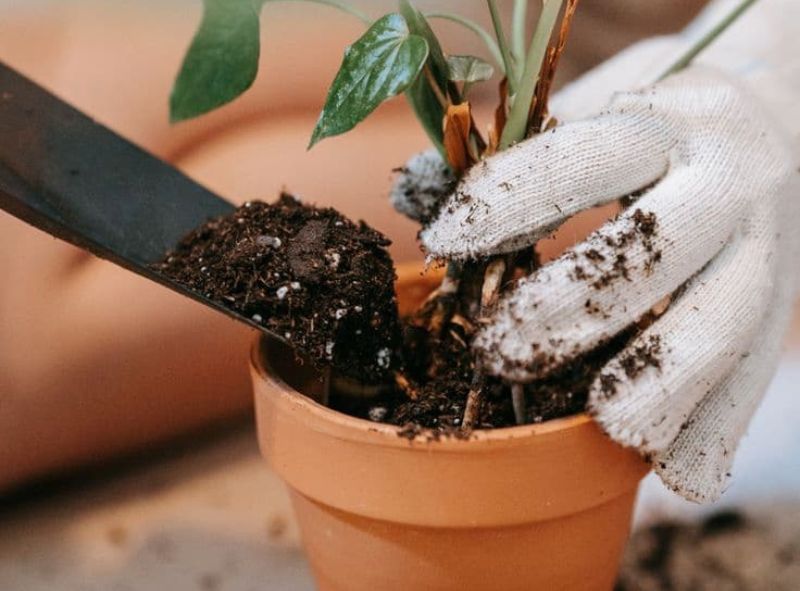Repotting your houseplants is an essential step for their health and growth. Follow this short guide to know when and how to repot your plants, as well as the care needed after repotting.
When to repot your houseplants?
Signs It's Time to Repot
Houseplants show clear signs when they need to be repotted. Slowed growth, smaller and fewer new leaves, and a need for more frequent watering. All of these signs show that it is time to give your plant a new space to grow.
Also check the condition of the roots: if they are protruding from the drainage hole, are flush with the surface or go around the pot, it is time to repot.
A plant that seems unsteady or tips over easily can also be a sign that it is cramped in its current pot.
The best time to repot
Repotting is best done during the plant's growing season, which runs from spring to fall. The months of March and April are ideal for repotting most indoor plants , such as Monsteras, Zamioculcas, and Pothos. Avoid repotting between November and February, when the plants are dormant, as well as during flowering to avoid stressing the plant.
Repotting during the active growth period allows the roots to establish quickly in the new soil, reducing any risk of shock to the plant.
How to repot your indoor plants?
Preparation and necessary materials
To repot an indoor plant , get a terracotta or plastic pot that is larger than the previous pot (2 to 4 cm larger for a pot less than 30 cm in diameter, 5 to 10 cm larger for a pot larger than 30 cm). Use a potting soil that is suitable for your plant , whether it is potting soil for green plants, flowers, cacti or succulents.
Also have a garden knife or pair of scissors ready to cut away dead or rotten roots, and make sure you have a watering can handy to water the plant after repotting.
Steps of repotting
- Carefully remove the plant from its current pot : To do this, hold the base of the stem and gently pull. If the plant resists, gently tap the sides of the pot to help loosen the root ball.
- Clean the roots : Remove any remaining soil by gently shaking the root ball, then cut off any dead or rotten roots using your knife or scissors. This will help stimulate the growth of new, healthy roots.
- Prepare the new pot : Place a layer of fresh potting soil at the bottom of the new pot. This layer should be sufficient so that the plant is at the same height as in its old pot.
- Install the plant : Place the plant in the center of the pot, with the roots well spread out, then add potting soil around the root ball up to 2 to 5 cm below the rim of the pot. Make sure the plant is straight and stable.
- Lightly pack the soil : To eliminate air bubbles and ensure good contact between the roots and the soil, lightly pack the soil around the plant. This will also help hold the plant in place.
- Water generously : After repotting , water the plant generously to help stabilize the soil and provide the necessary moisture to the roots. Make sure the water drains well through the drainage hole to avoid water accumulation at the bottom of the pot.
- For strong roots after repotting, you can use willow water , diluted in the watering water (2 full pipettes for 100ml of water). Willow water stimulates root development and this is the ideal time to give your plants this boost.
Care after repotting
After repotting, it is crucial to monitor your plant to ensure that it is adjusting well to its new environment. Keep it out of direct light for a few days to allow it to recover.
Water sparingly for the first few weeks. Avoid overwatering, as newly pruned roots are more sensitive and die more easily.
Repotting our indoor plants is essential for their health and growth. By choosing the right time and following the right steps, you will have healthy plants with beautiful, robust roots!
Each plant has specific needs, so adapt your care according to the requirements of each one. 🌿
💌For more advice, you can send us a little message on Insta or subscribe to our newsletter!


